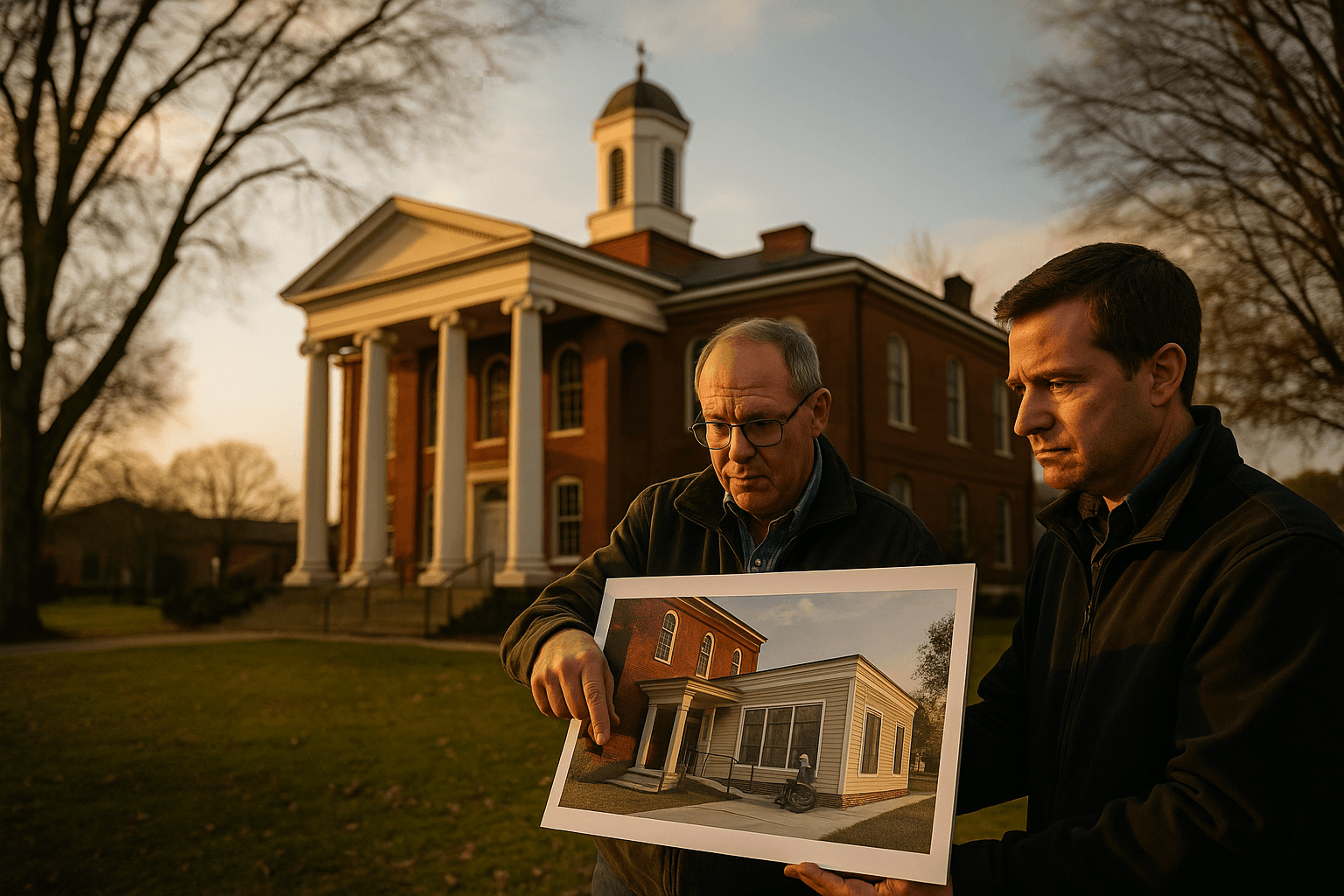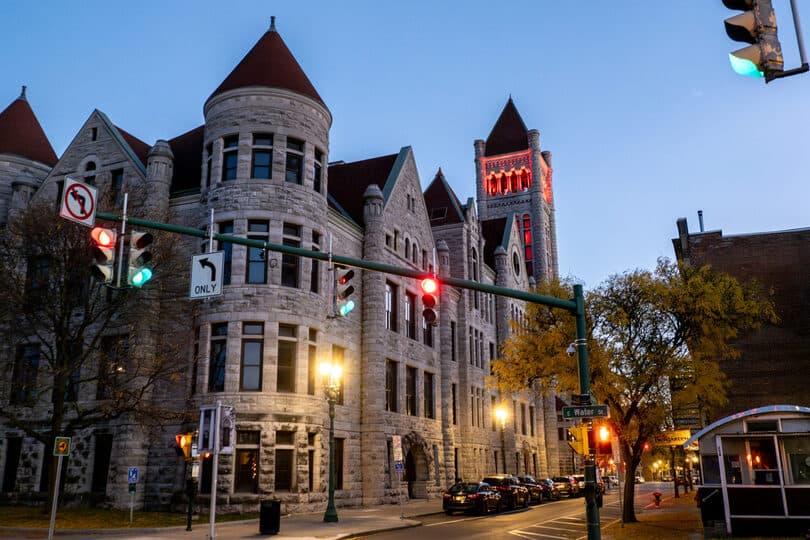County prepares to add accessible annex to historic Rome Courthouse
Perry County officials unveiled drawings on November 20 for a 943 square foot annex to the 1818 Rome Courthouse, and began preparing to accept construction bids. The addition is designed to improve public access and meeting capacity while preserving the courthouse historic footprint, a development with direct implications for accessibility, civic use, and local contractors.

Perry County officials moved forward on November 20 with plans for a modest annex to the 1818 Rome Courthouse, advancing drawings and initiating preparations to accept bids for construction. The proposed 943 square foot addition will include two ADA restrooms and a catering kitchen, and its finished floor will be built to match the courthouse level with ramps to ensure accessibility for all visitors.
Officials framed the annex as a response to growing public needs for accessible facilities and flexible meeting space, while deliberately keeping the courthouse original footprint intact. By placing new service areas in an adjacent structure, county leaders aim to preserve the historic interiors and external appearance of a building that has served the Rome community for more than two centuries.
For Perry County residents the project carries immediate practical benefits. Two ADA restrooms and level access will remove barriers for elderly and disabled citizens who use the courthouse for legal matters, public records, and civic events. A catering kitchen and expanded meeting capacity will support community gatherings, official functions, and local groups that rely on courthouse space for civic life. The construction bidding process is also likely to produce short term economic activity, offering contracting opportunities for local firms and tradespeople when bids are formally solicited.

The plan reflects broader trends in heritage stewardship that balance conservation with contemporary accessibility requirements. Ensuring that a landmark from 1818 meets modern standards without altering its historic footprint engages both preservation practice and legal obligations under the Americans with Disabilities Act. For a small community, the project signals a commitment to maintaining the courthouse as a living civic center rather than a preserved relic.
Next steps include finalizing bid documents and opening the procurement process, after which a successful bidder will be selected and construction scheduled. Residents interested in the courthouse future should follow county announcements for formal bid openings and project timelines as officials move from drawings to construction.


